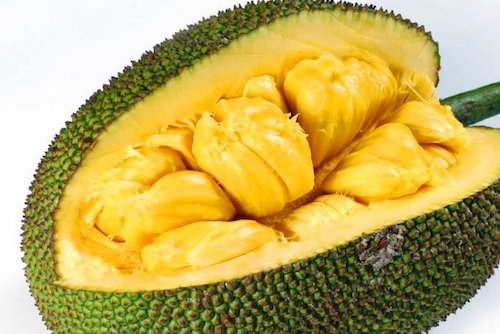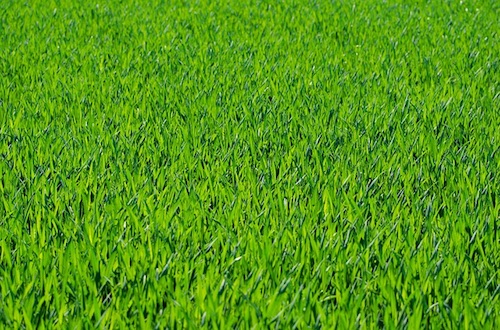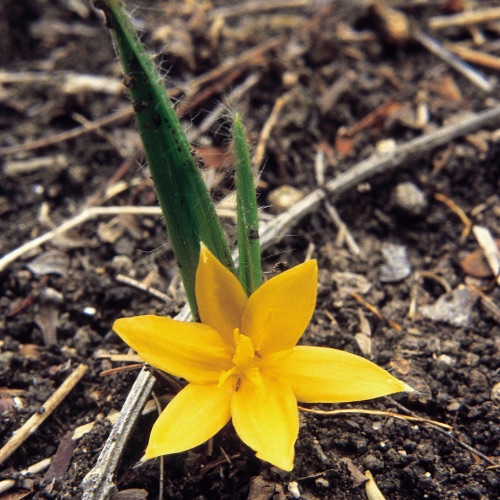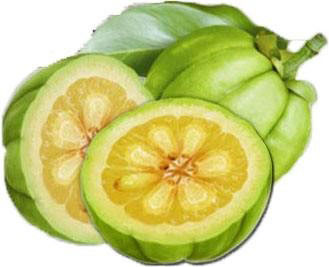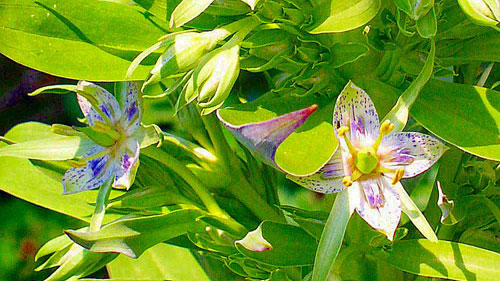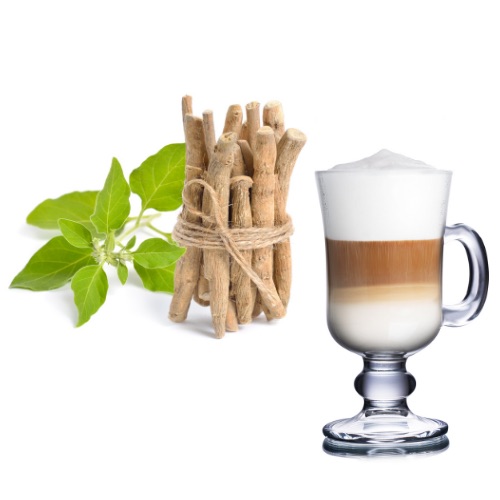The Ashoka, a magnificent tree native to the Indian subcontinent, has a rich history steeped in folklore and tradition. As part of the Saraca genus, it holds a unique place in both botany and culture. Its striking appearance, characterized by bright orange-red flowers clustered on dense, evergreen branches, imparts a lush, vibrant aesthetic, drawing admiration from flora enthusiasts worldwide.
Related articles
Best Ayurvedic Medicine PCOS / PCOD
Ayurvedic Medicine for Female Libido
This tree is renowned for its therapeutic properties, making it highly valuable in traditional medicine. Its bark, seeds, and flowers are used in formulations aimed at easing various health ailments. The plant’s medicinal use is particularly emphasized in Ayurveda, where it plays a pivotal role in women’s health.
Beyond its medicinal value, the tree’s symbolism resonates deeply within Indian mythology and religion. It is regarded as a sacred symbol of love and fertility, often associated with important deities. The enchanting beauty of its blossoms, contrasted against the deep-green leaves, serves as a source of inspiration for artists, poets, and writers. Its impressive shade also provides a cool and serene environment, making it a favoured selection in landscaping and garden designs. It is, indeed, a tree that perfectly blends natural beauty, cultural significance, and medicinal value.
Ayurvedic herb Ashoka or Saraca Asoca is recommended by Ayurveda to treat female infertility, PCOS or pcod, perimenopause, etc
Here is the list of benefits of Ashoka tree, especially for females.
Table of content
Ashoka powder benefits for pcos
Ashoka flowers improve skin health
Ashoka bark benefits in Irregular and painful periods
Ayurveda Medicinal properties of Ashoka
Uses of Ashoka Tree According to Ayurveda
Chemical composition of Ashoka tree
Ashoka powder benefits for pcos
The benefits of using the Ashoka, in addressing polycystic ovary syndrome (PCOS) are intriguing and seem promising. This tree’s bark is often ground into a fine powder and used as a traditional remedy in Ayurvedic medicine, with its medicinal properties documented in several ancient texts.
The effectiveness of the tree’s bark powder in managing PCOS symptoms primarily lies in its rich blend of phytochemicals. Notably, the bark contains flavonoids, sterols, and tannins, substances known to exhibit hormonal balancing effects (Mhaskar & Blatter, 2000). These bioactive components may help regulate menstrual cycles and alleviate associated discomfort, which is particularly beneficial for those with PCOS.
Moreover, research has shown that the bark extract’s anti-inflammatory properties can mitigate the chronic low-grade inflammation often associated with PCOS (Bhattacharya, 2006). This characteristic, combined with the powder’s antioxidant properties, could potentially reduce oxidative stress, a contributing factor in the progression of PCOS (Thomson et al., 2012).
Recent studies suggest potential anti-hyperglycemic effects of the bark extract, which may aid in managing insulin resistance, a common feature of PCOS (Vaidya, 2010). Though promising, it’s crucial to remember that these studies are preliminary and often carried out on animals. Therefore, further research on human subjects is needed to confirm these benefits conclusively.
As a dietary supplement, Ashoka bark powder can be consumed directly or used in herbal tea preparations. However, it is strongly advised to consult with a healthcare provider before starting any new supplement regimen, especially for individuals with pre-existing health conditions or those on certain medications.
Remember, the management of PCOS involves a multifaceted approach, which includes dietary changes, regular exercise, stress management, and sometimes medical intervention. While supplements like Ashoka bark powder can potentially provide additional support, they should not be used as a replacement for professional medical advice or treatment.
Ashoka helps in menopause
Saraca asoca, has been widely used in Ayurvedic medicine, demonstrating potential efficacy in managing various women’s health conditions. It is especially considered a potent aid during the menopausal phase, which is characterized by the cessation of menstruation and significant hormonal fluctuations.
A primary benefit of this tree’s bark extract relates to its hormonal balancing properties, which can help mitigate the most common symptoms of menopause such as hot flashes, night sweats, mood swings, and sleep disturbances. The bark contains phytoestrogens, plant-based compounds that mimic the actions of estrogen, the hormone that tends to decline during menopause (Dutta & Datta, 2012).
Another crucial aspect of the tree’s extract is its potential impact on bone health. Menopause often accelerates bone loss due to the decline in estrogen, increasing the risk of osteoporosis. Research suggests that the flavonoids present in the tree’s bark may have a protective effect on bones, helping to maintain their density and strength (Panda & Misra, 2011).
Moreover, the extract’s anti-inflammatory and antioxidant properties can also provide significant health benefits. Chronic inflammation and oxidative stress are often associated with age-related diseases, including cardiovascular disorders, which have a higher incidence in postmenopausal women. These protective properties of the tree’s extract can contribute to overall health and well-being during this life stage.
It’s important to note that the use of this herbal remedy should be under the guidance of a healthcare provider. Its consumption can be in the form of a dietary supplement, tincture, or tea, prepared from the bark of the tree. However, it’s crucial to recognize that managing menopausal symptoms should include a holistic approach that incorporates balanced nutrition, regular exercise, adequate sleep, and stress management.
Ashoka flowers improve skin health
The flowers of Saraca asoca, colloquially known as Ashoka, have long been utilized in the realm of skincare due to their numerous therapeutic properties. These blossoms, laden with essential nutrients, contribute significantly to maintaining skin health and enhancing one’s complexion.
The extract derived from these vibrant flowers is rich in antioxidants, specifically flavonoids and tannins. These compounds are known to combat free radicals, which are the primary culprits behind skin aging. Regular use of the flower extract can help reduce the appearance of wrinkles, fine lines, and age spots, resulting in a youthful, rejuvenated complexion (Asha & Prashanth, 2013).
Another notable property of the floral extract is its potent anti-inflammatory action. This characteristic proves useful in addressing a myriad of skin issues, such as acne, eczema, and psoriasis. By reducing inflammation and redness, the flower extract can help soothe irritated skin and promote a balanced skin tone.
Moreover, these flowers possess remarkable antibacterial properties, making them effective against harmful skin bacteria that cause acne and infections. Additionally, the extract can potentially stimulate skin cell regeneration and wound healing, fostering a healthy and clear complexion.
It’s essential to mention that these benefits can be accessed through various skincare products containing Ashoka flower extract, including face creams, serums, and masks. Moreover, a homemade solution can be prepared by infusing the dried flowers in a suitable carrier oil. However, prior to applying any new product, it’s advised to conduct a patch test to rule out potential allergic reactions.
Despite the many promising benefits, it’s crucial to remember that the effectiveness of natural remedies may vary among individuals. A comprehensive skincare routine, combined with a balanced diet and adequate hydration, is fundamental for achieving and maintaining healthy skin.
Ashoka improves female libido
The use of Saraca asoca, has been deeply rooted in traditional Ayurvedic medicine, exhibiting numerous health benefits, particularly concerning women’s health. One area that shows promise is its potential effect on enhancing female libido or sexual desire.
This tree’s bark, rich in various bioactive compounds such as flavonoids, sterols, and glycosides, is believed to help balance hormonal irregularities. The hormonal equilibrium is a key determinant of female sexual desire, and any disturbances can often lead to decreased libido (Gupta et al., 2011). Thus, the bark’s potential to regulate hormonal imbalances may have a positive effect on enhancing sexual desire.
Another aspect of this tree’s bark extract involves its possible role in reducing stress and anxiety. Chronic stress can significantly dampen sexual desire, and by promoting relaxation and reducing anxiety, the bark extract may indirectly help improve libido. Its antioxidant and anti-inflammatory properties may also contribute to overall wellness, which could subsequently impact sexual health positively.
A unique feature of Ashoka is its historical symbolism as a symbol of love and fertility in Indian culture. This cultural belief might not have a direct scientific correlation, but the psychological impact of these cultural beliefs could also play a role in its efficacy.
It’s essential to note that while the use of Ashoka for increasing female libido seems promising, scientific evidence is relatively limited, with most studies being either preclinical or anecdotal. Furthermore, the use of this bark extract should always be under the guidance of a healthcare provider to ensure safe and appropriate use.
The consumption of this herbal remedy can be in various forms, including as a dietary supplement, tincture, or tea. However, a holistic approach that includes balanced nutrition, regular exercise, stress management, and open communication with one’s partner should also be considered essential when addressing concerns about libido.
Ashoka bark benefits in Irregular and painful periods
Saraca asoca, popularly known as Ashoka, is highly valued in traditional medicine, particularly Ayurveda, for its potential benefits in women’s health. One area of significance is the plant’s reported effectiveness in regularizing menstrual cycles.
The tree’s bark extract is rich in flavonoids, sterols, and tannins, bioactive compounds that are believed to exhibit hormonal balancing effects. These substances can potentially help manage hormonal imbalances often implicated in menstrual irregularities, such as polycystic ovary syndrome (PCOS) and amenorrhea (absence of menstruation) (Dutta & Datta, 2012).
In addition to promoting hormonal balance, this herbal remedy also contains analgesic and anti-inflammatory properties, which can help alleviate menstrual pain and inflammation. This is particularly beneficial for women experiencing dysmenorrhea (painful periods) or menorrhagia (heavy bleeding) (Sharma, et al., 2018).
Moreover, the bark extract’s uterine tonic effect plays a role in strengthening the uterine muscles, which can facilitate regular and less painful menstruation (Dutta & Datta, 2012). However, it’s important to note that these findings are mostly based on traditional use and preliminary studies, and more comprehensive research is needed to fully establish its effectiveness and safety.
Before initiating a supplement regimen with this plant’s extract, it’s crucial to consult with a healthcare provider, as it can interact with certain medications and may not be suitable for everyone. It’s also vital to remember that while herbal supplements can provide supportive benefits, they should not replace professional medical advice or treatment.
In conclusion, the use of Saraca asoca in managing menstrual irregularities reflects the tree’s significant role in traditional medicine. Its potential benefits, combined with a holistic approach to health that includes balanced nutrition, regular exercise, and stress management, can contribute to better menstrual health.
Ayurveda Medicinal properties of Ashoka
This plant is known by several names in India like Ashoka in Hindi, Marathi, Bengali, and Gujarati. In Tamil it is Ashogam and in Telugu it is ashokamu. Plant Ashoka is abundantly found in South India, Central, and the eastern Himalayas.
Ayurveda acharyas have coined various names in Sanskrit for this tree based on its health benefits and appearance. It is known as Ashoka as this helps women to get rid of their ‘shoka’ or grief. Parts of this plant are mainly used in gynecological disorders like dysmenorrhea or pain during menstruation, heavy bleeding during the menstrual cycle, etc. It is also known as Hemapushpa, as this tree has golden-colored flowers. The leaves of Ashoka are of copper color when they are tender, hence the name Tamrapallava.
Texts of Ayurveda describe the medicinal and pharmacological properties of this herb as follows

The stem, bark, flower, and seeds of this plant are used for medicinal purposes. Based on the principles of Ayurveda this herb is light to digest (laghu) and dries up body tissues or absorbs more moisture (rooksha). This herb acts as a body coolant (sheeta veerya). It is bitter to taste (tikta rasa) and also has kashaya rasa or astringent taste. After digestion, it tastes pungent (Katu rasa). The bark of Ashoka contracts body tissues (grahi) when used in medications. It improves fairness and the glow of the skin. It also helps in skin rashes, abdominal parasites, and inflammatory conditions.
It has astringent (Kashaya Rasa) and bitter (Tikta Rasa) tastes. This herb acts as body coolant (sheeta Veerya) and balances Kapha Dosha and Pitta Dosha
Uses of Ashoka Tree According to Ayurveda
Texts of Ayurveda praise the health benefits of this herb. Here is the list of medicinal uses of Ashoka plant.
Ashoka Plant Uses in In PCOS , Menopause and Other Gynecological Conditions:
This herb is eulogized in the texts of Ayurveda as ‘asrajit’. This means it helps to reduce excessive bleeding which usually occurs in PCOS or PCOD and during menopause. It is the best herb for PCOS. It also reduces incidences of tumors like fibroids in the uterus (gulmahara). Ashoka tree parts help to reduce uterine pain during menstruation (shulahara). It is useful in all gynecological problems which occur during puberty, menorrhagia, dysmenorrhagia, premenstrual syndrome, abnormal bleeding, and threatened abortion. This herb is recommended to strengthen the uterus (when the uterus is weak and prolapsed) and to reduce white discharge. Ksheerapaka of this herb or the milk prepared by boiling the bark of this plant in milk is recommended in excess bleeding during menstruation, puberty, menorrhagia, Dysmenorrhagia, premenstrual syndrome, abnormal bleeding, and threatened abortion. Hence this herb is used in ayurvedic capsules for PCOS and ayurvedic capsules for female infertility. This herb also helps to increase female libido.
As a Body Coolant :
This plant helps to reduce body heat or acts as a body coolant. When pitta is imbalanced and increased, it produces more heat in the body. The herb Ashoka helps to balance pitta and reduce body heat.
In diarrhea and dysentery:
The decoction of this herb helps to absorb more water from the intestines and reduce intestinal motility. Hence it is known as Grahi. This medicinal property is useful to control diarrhea, dysentery, and IBS.
Improves Skin Glow:
It is praised as ‘varnya’. That means it enhances the glow and complexion of the skin. Chemical constituents of this plant have shown antibacterial effects and this helps in acne and pimple. Extract of this plant is usually used in ayurvedic cosmetics to improve skin texture. The decoction of asoca bark can be applied externally to reduce skin irritation and burning sensation
A detox agent:
It balances kapha dosha and pitta dosha. But increases vata dosha. This herb acts as a detox and cleanses the body by eliminating toxins (vishahara). This can be used as the best ayurvedic skin detox herb. This herb also reduces body fatigue and tiredness (shramahara).
In Problems of Digestive system:
It relieves thirst, bloating and reduces burning sensation. Flower extract of this plant can help to heal peptic ulcers. This plant is known for its anti-parasitic activity (krimighna). This prevents emaciation.
Best heart tonic:
It acts as a heart tonic (hrudya) and is useful in cardiac disorders.
In Cystitis and UTI:
As it is a body coolant herb and has anti-inflammatory properties, it soothes inflamed inner layers of the bladder and relieves cystitis and UTI. It also reduces burning sensation while passing urine in UTI. It is the best ayurvedic treatment for cystitis.
Enhances Sleep Quality:
Studies have shown that the leaves of this tree help to improve sleep quality. It can be used as an ayurvedic remedy for insomnia.
Useful In Diabetes :
The decoction made from this bark helps to control blood sugar levels and is useful in diabetes. Hence ayurvedic doctors recommend this natural ayurvedic remedy for diabetes.
Side effects of Ashoka Tree:
This herb tends to worsen amenorrhoea. Pregnant women and people with cardiac disorders should seek medical consultation before taking this herb. Some herbs may trigger allergic reactions. Hence consult a qualified ayurvedic doctor before using this herb.
Chemical composition of Ashoka tree
The Bark contains procyanidin, epicatechin, 11′-deoxyprocyanidin B, catechin, leucopelargonidin, and leucocyanidin. Flowers contain Oleic, linoleic, palmitic and stearic acidssitosterol, quercetin, kaempferol, quercetin, apigenin- 7-0-p-D-glucoside, Pelargonidin- 3, 5- diglucoside, cyanidin-3, 5- diglucoside, palmitic, stearic, linolenic, leucocyanidin and gallic acid. Seeds and Pod contain oleic, linoleic, palmitic and stearic acids, catechol, (-) epicatechol and leucocyanidin. Five lignin glycosides, lyoniside, nudiposide, 5-methoxy9-β-xylopyranosyl, isolariciresinol, and schizandriside, and three flavonoids, epicatechin, epiafzelechin-(4β→8)-epicatechin and procyanidin B2, together with β-sitosterol glucoside, were isolated from dried bark. ( Ref- ‘ www.ijpcsonline.com/files/73-533.pdf ’ )
Author: Dr.Savitha Suri , Consultant Ayurvedic Physician

